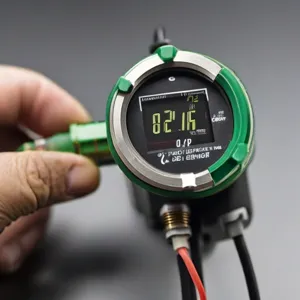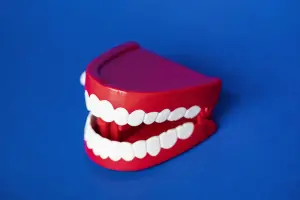In a world where health trends come and go, intermittent fasting has emerged as a revolutionary approach to wellness that captivates both the curious and the committed.
Far beyond just a dieting technique, this practice involves cycling between periods of eating and fasting, unlocking a treasure trove of surprising benefits for the body and mind. From weight loss and improved metabolism to enhanced mental clarity and boosted energy levels, intermittent fasting offers a holistic path to rejuvenation that many are only beginning to explore. In this blog post, we will delve into the fascinating science behind intermittent fasting, uncover its myriad health benefits, and provide practical tips for integrating this lifestyle change into your daily routine. Whether you’re a seasoned health enthusiast or simply seeking a fresh approach to well-being, join us as we embark on a journey to unlock the potential of intermittent fasting and embrace a healthier, more vibrant life.
1. Introduction to Intermittent Fasting

Intermittent fasting (IF) has taken the wellness world by storm, emerging as a powerful tool for those seeking to enhance their health and well-being. Unlike traditional diets that focus on what to eat, intermittent fasting emphasizes when to eat, offering a refreshing approach to nutrition. At its core, IF involves cycling between periods of eating and fasting, allowing your body to undergo a transformative process that can lead to numerous health benefits.
With its roots tracing back to ancient practices, intermittent fasting is not a modern fad; rather, it draws on centuries of human experience where food scarcity naturally dictated eating patterns. Today, various methods of intermittent fasting have gained popularity, such as the 16/8 method, which involves fasting for 16 hours and eating within an 8-hour window, or the 5:2 method, where individuals consume a normal diet for five days and restrict calories on two non-consecutive days.
The appeal of intermittent fasting goes beyond weight loss—it is becoming increasingly recognized for its potential to promote metabolic health, improve brain function, and even extend longevity. As more studies unveil its benefits, many are discovering that intermittent fasting can lead to heightened energy levels, improved focus, and a greater sense of clarity. In this blog post, we will delve into the fascinating science behind intermittent fasting, exploring how it works, its myriad health benefits, and practical tips to help you incorporate this lifestyle change effectively. Whether you’re looking to shed a few pounds or simply optimize your health, understanding intermittent fasting may unlock a new pathway to wellness you never thought possible.
2. How Intermittent Fasting Works
Intermittent fasting (IF) is more than just a trendy diet; it’s a powerful approach to eating that can transform your relationship with food and your body. At its core, intermittent fasting involves cycling between periods of eating and fasting, allowing the body to tap into its natural processes for healing and rejuvenation.
During the fasting period, the body undergoes a remarkable shift. Instead of relying on glucose from food for energy, it begins to utilize stored fat as its primary fuel source. This metabolic switch not only aids in weight loss but also enhances mental clarity and focus, as the brain benefits from the increased availability of fatty acids and ketones.
IF can take various forms, from the popular 16/8 method, which entails fasting for 16 hours and eating within an 8-hour window, to alternate-day fasting and the 5:2 approach, where you eat normally for five days and restrict calories on two non-consecutive days. Each of these methods allows for flexibility, making it easier to incorporate into various lifestyles.
Moreover, intermittent fasting triggers a process called autophagy, where the body cleans out damaged cells and regenerates new ones. This cellular housekeeping is crucial for maintaining health and longevity, as it helps to prevent diseases and supports overall wellness.
As you embark on your intermittent fasting journey, it’s essential to focus on nutrient-dense foods during your eating windows. This ensures that your body receives essential vitamins and minerals to sustain energy levels and support bodily functions. With the right approach, intermittent fasting can not only simplify your eating habits but also unlock a range of impressive health benefits.
3. The Science Behind Fasting and Metabolism

Intermittent fasting (IF) has garnered significant attention in recent years, not just as a dietary trend but as a powerful tool for enhancing metabolic health. At its core, the science behind fasting and metabolism revolves around how our bodies utilize energy and adapt to periods of caloric restriction.
When you embark on an intermittent fasting regimen, your body undergoes a remarkable metabolic shift. During the fasting phase, insulin levels drop significantly, which facilitates fat burning. With lower insulin levels, the body begins to break down fat stores for energy, leading to a state known as ketosis. This process not only aids in weight loss but also promotes the utilization of fat as a primary energy source, which can enhance overall metabolic efficiency.
Moreover, fasting triggers a range of hormonal changes that further support metabolic health. For instance, levels of norepinephrine—a hormone that boosts fat burning—can increase dramatically during fasting periods. Simultaneously, human growth hormone (HGH) levels may also rise, promoting muscle preservation and fat loss. These hormonal adjustments create a favorable environment for your body to become more adept at managing energy, ultimately leading to improved metabolic flexibility.
Research has shown that intermittent fasting can also have profound effects on cellular repair processes. When fasting, cellular stress responses are activated, triggering autophagy—an essential detoxification process where cells remove damaged components. This not only supports metabolic health but has also been linked to longevity and reduced risk of chronic diseases.
In essence, the science behind fasting and metabolism reveals a fascinating interplay between energy utilization, hormonal regulation, and cellular rejuvenation. By understanding these mechanisms, you can appreciate how intermittent fasting serves as a catalyst for unlocking a healthier, more efficient metabolic state, paving the way for overall wellness and vitality.
4. Health Benefits: Weight Loss and Maintenance
Intermittent fasting (IF) has gained significant traction as a popular approach to weight management, and for good reason. At its core, IF involves alternating cycles of eating and fasting, which can lead to a plethora of health benefits, particularly in terms of weight loss and maintenance.
One of the most compelling aspects of intermittent fasting is its ability to facilitate weight loss without the need for meticulous calorie counting or restrictive dieting. By design, fasting periods reduce the window of time in which you can eat, often leading to a natural decrease in overall caloric intake. This reduction, combined with the body’s metabolic response to fasting, can result in significant fat loss. During fasting, your body shifts from using glucose as its primary energy source to burning fat for fuel, promoting a more efficient fat-burning process.
Moreover, intermittent fasting may enhance metabolic health by improving insulin sensitivity. Lower insulin levels during fasting periods can help your body better utilize stored fat, making it easier to shed those stubborn pounds. Studies have shown that individuals who practice intermittent fasting not only lose weight but also experience a reduction in visceral fat—the harmful fat that accumulates around the organs and is linked to various health issues.
But the benefits of intermittent fasting extend beyond just weight loss. For those who have successfully shed extra pounds, IF can serve as a powerful tool for weight maintenance. By restructuring eating habits and encouraging mindful consumption, intermittent fasting can help prevent the cycle of yo-yo dieting that many experience. When integrated into a healthy lifestyle, IF allows for flexibility and can be tailored to fit the individual’s needs, making it easier to sustain long-term weight management.
In summary, intermittent fasting presents a compelling strategy for achieving and maintaining a healthy weight while simultaneously offering a range of metabolic benefits. Whether you’re looking to jumpstart your weight loss journey or simply maintain your current physique, embracing the rhythm of intermittent fasting might just be the key to unlocking your wellness potential.
5. Enhanced Mental Clarity and Focus

One of the most remarkable yet often overlooked benefits of intermittent fasting is its ability to enhance mental clarity and focus. As you embark on this fasting journey, you may initially experience hunger pangs and cravings, but as your body adjusts, something extraordinary happens: your mind begins to sharpen.
During fasting periods, your body enters a state of ketosis, where it starts to utilize fat as its primary energy source instead of glucose. This metabolic shift not only fuels your body but also provides your brain with a steady stream of energy, leading to improved cognitive function. Many practitioners report an increased ability to concentrate, heightened creativity, and a sense of mental clarity that can feel almost euphoric.
Research supports these experiences, indicating that intermittent fasting can stimulate the production of brain-derived neurotrophic factor (BDNF), a protein that plays a crucial role in brain health. Higher levels of BDNF are associated with improved memory, learning capabilities, and overall brain function. Additionally, fasting may help reduce oxidative stress and inflammation in the brain, further promoting mental wellness.
Beyond the biochemical changes, the structure of intermittent fasting itself can encourage a more mindful approach to eating and living. By setting specific eating windows, you cultivate discipline, allowing your mind to focus on tasks without the distraction of constant snacking or meal planning. This newfound mental space can lead to greater productivity and a more profound ability to engage with your work and passions.
For those looking to unlock not just physical wellness but also mental acuity, intermittent fasting may just be the key. As you embrace this practice, you might find your thoughts clearer, your ideas sharper, and your focus unwavering—transforming your daily life in ways you never imagined.
6. Cellular Repair and Autophagy Explained
Cellular repair and autophagy are fascinating biological processes that play a crucial role in maintaining our overall health, and intermittent fasting has been shown to enhance these mechanisms significantly. At its core, autophagy is the body’s way of cleaning out damaged cells, allowing for the regeneration of newer, healthier cells. This process is akin to a cellular spring cleaning—removing toxins, misfolded proteins, and dysfunctional organelles that can accumulate over time.
When you engage in intermittent fasting, your body enters a state of metabolic switching, shifting from using glucose for energy to utilizing fat stores. This shift not only promotes weight loss but also triggers autophagy, which typically becomes more active during fasting periods. Studies have shown that fasting can increase the levels of autophagy-related proteins, effectively enhancing your body’s ability to repair itself at the cellular level.
This cellular rejuvenation is not just beneficial for physical health; it also has profound implications for our mental well-being. As damaged cells are removed, the body can better cope with stress and inflammation, potentially reducing the risk of various chronic diseases. Moreover, improved cellular health can lead to enhanced cognitive function and clarity, allowing you to feel more alert and focused throughout your day.
In essence, intermittent fasting is not just about calorie restriction; it’s a powerful tool for unlocking the body’s innate repair systems. By embracing this practice, you can tap into the remarkable benefits of autophagy, promoting longevity and vitality as you nourish your body from the inside out. Whether you’re looking to enhance your physical performance, improve your mood, or simply lead a healthier lifestyle, understanding and harnessing the power of cellular repair can be a game-changer on your wellness journey.
7. Intermittent Fasting and Its Effects on Aging

Intermittent fasting (IF) has gained a reputation not just as a powerful weight management tool, but also as a potential ally in the fight against aging. As we age, our bodies undergo various changes, including a decline in cellular repair and a decrease in metabolic efficiency. However, research suggests that intermittent fasting may help counteract some of these age-related challenges, offering a path to healthier aging.
One of the most intriguing aspects of IF is its ability to activate autophagy, the body’s natural process of cleaning out damaged cells and regenerating new ones. This process is essential for maintaining cellular health and function, and it tends to slow down with age. By limiting our eating windows, intermittent fasting encourages the body to enter a state where it can effectively carry out autophagy, potentially reducing the risk of age-related diseases and promoting longevity.
Furthermore, intermittent fasting has been linked to improved insulin sensitivity and reduced inflammation—two factors known to contribute to the aging process. When our bodies are more sensitive to insulin, they can better regulate blood sugar levels, minimizing the risk of conditions like type 2 diabetes. Similarly, lowering inflammation can help stave off chronic diseases such as heart disease and arthritis, which are often exacerbated by age.
Additionally, studies have shown that intermittent fasting may influence the expression of genes associated with longevity and stress resistance. These genes can help protect our cells from damage and promote overall well-being as we grow older. While the exact mechanisms are still being researched, the potential for intermittent fasting to enhance our health span—the period of life spent in good health—is a promising area of exploration.
Incorporating intermittent fasting into your lifestyle not only has the potential to support weight loss and improve metabolic health, but it may also serve as a powerful strategy for promoting healthy aging. As science continues to unveil the multifaceted benefits of this eating pattern, it becomes increasingly clear that intermittent fasting could be a key player in unlocking wellness and vitality as we age.
8. Improvements in Blood Sugar and Insulin Sensitivity
Intermittent fasting (IF) has gained significant attention for its profound impact on metabolic health, particularly in improving blood sugar levels and enhancing insulin sensitivity. As our lifestyles have become increasingly fast-paced, the prevalence of insulin resistance has surged, leading to a host of metabolic disorders, including type 2 diabetes. However, studies suggest that intermittent fasting can be a game-changer in reversing these trends.
When you engage in intermittent fasting, your body undergoes a series of metabolic shifts that can lead to lower blood sugar levels. By extending the period between meals, you give your body a chance to stabilize blood glucose levels, reducing insulin spikes that often accompany frequent eating. This approach allows your cells to become more receptive to insulin, the hormone responsible for regulating blood sugar. As a result, your body becomes more efficient at utilizing glucose for energy, rather than allowing it to linger in the bloodstream.
Research has shown that individuals who practice intermittent fasting often experience significant improvements in insulin sensitivity, which is a crucial factor in reducing the risk of diabetes. In one study, participants who followed an intermittent fasting regimen exhibited a 20-30% increase in insulin sensitivity, compared to their baseline levels. This enhanced sensitivity means that even smaller amounts of insulin are needed to maintain normal blood sugar levels, effectively minimizing the risk of insulin resistance over time.
Moreover, intermittent fasting can aid in weight loss, which is another key player in managing blood sugar levels. By reducing caloric intake and promoting fat loss, intermittent fasting helps to decrease the amount of fatty tissue around the liver and muscle cells, areas that are often linked to insulin insensitivity. As these fatty deposits decrease, your body becomes better equipped to maintain normal glucose levels and respond to insulin appropriately.
In summary, the practice of intermittent fasting not only supports weight management but also fosters a healthier metabolic environment. By improving blood sugar control and bolstering insulin sensitivity, intermittent fasting can serve as a powerful tool in the journey toward better overall health, making it a worthy consideration for anyone looking to enhance their wellness.
9. The Impact on Heart Health
Intermittent fasting (IF) is often lauded for its weight management benefits, but its positive impact on heart health is equally compelling and deserves attention. As we delve into the science behind IF, it becomes clear that this eating pattern can lead to significant improvements in key cardiovascular risk factors.
One of the most striking benefits of intermittent fasting is its ability to lower blood pressure. Studies have shown that individuals who engage in IF often see a reduction in both systolic and diastolic blood pressure, which can help reduce the risk of heart disease. This may be attributed to the body’s increased insulin sensitivity during fasting periods, allowing for better regulation of blood sugar levels and reduced strain on the cardiovascular system.
Moreover, intermittent fasting has been linked to improved cholesterol levels. By promoting a favorable lipid profile, IF can contribute to lower levels of LDL cholesterol and triglycerides while boosting HDL (the “good” cholesterol). This shift not only mitigates the risk of plaque buildup in the arteries but also enhances overall heart function.
Additionally, intermittent fasting encourages the body’s natural repair processes, including autophagy, which helps remove damaged cells and reduces inflammation—two critical factors in maintaining heart health. Chronic inflammation is a known contributor to various cardiovascular diseases, and by minimizing this risk, IF supports a healthier heart over time.
Lastly, the mental clarity and energy that many practitioners of intermittent fasting report can lead to healthier lifestyle choices. With improved focus and vitality, individuals may find themselves more motivated to engage in regular physical activity and make better dietary decisions, further benefiting their cardiovascular health.
In summary, the impact of intermittent fasting on heart health is a multifaceted phenomenon, combining physiological improvements with lifestyle enhancements. By embracing this practice, you may not only unlock the potential for weight loss but also pave the way for a healthier heart and a longer, more vibrant life.
10. Mental Health Benefits: Mood and Stress Reduction
Intermittent fasting is not just a dietary choice; it’s a powerful tool that can significantly enhance mental health and emotional well-being. One of the most surprising benefits of this eating pattern is its ability to improve mood and reduce stress levels. Research has shown that fasting can lead to the release of endorphins, often referred to as “feel-good” hormones, which can elevate mood and create a sense of euphoria.
During fasting periods, the body undergoes various biochemical changes that can help optimize brain function. For instance, the reduction in insulin levels and the increase in circulating norepinephrine can boost energy levels and enhance focus. Many individuals report experiencing heightened clarity and concentration during fasting windows, attributing this mental sharpness to the reset of their body’s natural rhythms.
Moreover, intermittent fasting can also play a vital role in stress management. By allowing your body to take a break from constant digestion, you give your mind a chance to reset and recharge. This can lead to a decrease in anxiety levels and an overall sense of calm. Additionally, the self-discipline required for intermittent fasting can foster a greater sense of control over one’s life and choices, which can be empowering and contribute positively to mental health.
The practice of intermittent fasting can also encourage mindfulness around eating habits. It forces individuals to pay closer attention to their food choices and encourages them to savor meals rather than mindlessly snacking throughout the day. This enhanced awareness can lead to a more balanced relationship with food, which is crucial for long-term emotional stability.
As you embark on your intermittent fasting journey, be prepared for not only physical benefits but mental ones as well. Fostering a healthier mindset can lead to profound changes in how you approach not just your meals, but your life as a whole. Embrace the journey of intermittent fasting, and you may just find a newfound sense of emotional resilience alongside your physical wellness.
11. Common Myths and Misconceptions About Intermittent Fasting
When it comes to intermittent fasting, a plethora of myths and misconceptions can cloud its true benefits and practical application. Understanding these myths is crucial for anyone considering this approach to wellness.
One of the most pervasive misconceptions is that intermittent fasting equates to starving yourself. This couldn’t be further from the truth. In reality, intermittent fasting is not about deprivation; instead, it centers on timing your meals strategically to optimize your body’s natural rhythms. Many people find that during their eating windows, they can consume satisfying, nutritious meals that keep them energized and satiated.
Another common myth is that intermittent fasting leads to muscle loss. This concern often arises from a misunderstanding of how the body utilizes energy. Research shows that, when done correctly, fasting can actually preserve muscle mass while promoting fat loss. The body shifts into a fat-burning mode, using stored fat for energy, all while maintaining lean muscle through effective nutritional strategies and strength training.
Some also believe that intermittent fasting is only suitable for certain demographics—like those who are athletic or looking to lose weight. However, individuals across various lifestyles, ages, and health conditions can benefit from this dietary practice. It can enhance metabolic health, improve insulin sensitivity, and even support brain function, making it a versatile approach to wellness.
Lastly, there‘s a misconception that intermittent fasting requires strict adherence to specific food types or calorie counts. While it’s important to make healthy food choices during eating periods, intermittent fasting itself does not dictate what you should eat, allowing for more flexibility and personalization in your diet.
By debunking these myths, individuals can approach intermittent fasting with a clearer understanding, empowering them to unlock its numerous benefits for wellness and overall health.
12. Different Methods of Intermittent Fasting
Intermittent fasting (IF) isn’t a one-size-fits-all approach; rather, it offers a variety of methods that cater to different lifestyles and preferences. Understanding these various techniques can help you find the one that best fits your routine, making it easier to reap the numerous health benefits associated with this eating pattern.
**1. The 16/8 Method:** This popular approach involves fasting for 16 hours and eating during an 8-hour window. For many, this simply means skipping breakfast and enjoying their first meal at noon. With this method, you can easily incorporate your daily meals without feeling deprived.
**2. The 5:2 Diet:** In this method, you consume a normal diet five days a week while restricting your calorie intake to about 500-600 calories on two non-consecutive days. This approach allows for flexibility in your eating habits, making it easier to stick to in the long run while still offering significant health benefits.
**3. Alternate-Day Fasting:** As the name suggests, this method involves alternating between days of normal eating and days of fasting or very low-calorie intake. This can be more challenging, but it can lead to impressive results for those who commit to it.
**4. Eat-Stop-Eat:** This method focuses on fasting for a full 24 hours once or twice a week. While it may sound daunting, many find that they can adapt to this routine. Eating from dinner one day until dinner the next can be a powerful way to enhance weight loss and improve metabolic health.
**5. The Warrior Diet:** This somewhat unconventional method encourages fasting during the day and consuming a large meal at night. It aligns with the natural rhythms of our bodies, promoting a sense of fullness with fewer meals.
**6. Spontaneous Meal Skipping:** For those who prefer a less structured approach, simply skipping meals when it feels right can be effective. Listen to your body’s hunger cues, and if you’re not hungry, don’t force yourself to eat. This flexibility allows you to integrate fasting into your life without rigid rules.
Each of these methods has its unique benefits, so it’s important to experiment and find what works best for your body and lifestyle. Whether you’re looking to lose weight, improve your metabolic health, or boost your mental clarity, intermittent fasting can be a valuable tool in your wellness arsenal. By understanding and choosing the right method for you, you can unlock the potential of this transformative dietary strategy and enjoy the myriad of health benefits it has to offer.
13. Tips for Getting Started with Intermittent Fasting
Embarking on your intermittent fasting journey can feel overwhelming at first, but with the right approach, you can ease into this transformative lifestyle. Here are some practical tips to help you get started on the path to improved health and wellness.
**1. Choose Your Fasting Method:** There are several different methods of intermittent fasting, such as the 16/8 method (fasting for 16 hours and eating within an 8-hour window), the 5:2 method (eating normally for five days a week while restricting calories to around 500-600 on two non-consecutive days), or the Eat-Stop-Eat approach (24-hour fasts once or twice a week). Consider your lifestyle and what might work best for you, ensuring it feels sustainable rather than restrictive.
**2. Start Slow:** If the idea of fasting for extended periods feels daunting, ease into it. Begin with a shorter fasting window, such as 12 hours, and gradually increase the duration as your body adapts. This gradual approach can reduce discomfort and help you become accustomed to the fasting rhythm.
**3. Stay Hydrated:** One of the simplest yet most effective tips is to stay hydrated. During fasting periods, drink plenty of water, herbal teas, or black coffee. Not only will this help curb hunger pangs, but it also supports overall hydration, which is crucial for maintaining energy levels and bodily functions.
**4. Plan Your Meals Wisely:** When it’s time to eat, focus on nutrient-dense foods that will fuel your body and keep you satiated. Incorporate plenty of whole foods, such as lean proteins, healthy fats, fruits, and vegetables. Avoid highly processed foods that can lead to quick spikes and drops in blood sugar, leaving you feeling hungry sooner.
**5. Listen to Your Body:** Intermittent fasting is not a one-size-fits-all approach. Pay attention to how your body responds. If you feel dizzy, excessively fatigued, or unwell, it may be a sign to adjust your fasting schedule or consult a healthcare professional.
**6. Keep Yourself Busy:** Sometimes hunger pangs can be psychological rather than physical. Keeping yourself engaged in activities, hobbies, or even light exercise can help distract you from thoughts of food during fasting periods, making the experience more manageable.
**7. Connect with Supportive Communities:** Whether online or in-person, connecting with others who are also practicing intermittent fasting can provide motivation and accountability. Share experiences, tips, and recipes to make your journey rewarding and enjoyable.
Starting intermittent fasting might feel challenging at first, but by approaching it with intention and flexibility, you can unlock its surprising benefits while cultivating a healthier relationship with food. Remember, the key is to find a rhythm that suits your lifestyle and enhances your overall well-being. Happy fasting!
14. Potential Risks and Considerations
While intermittent fasting (IF) has gained popularity for its numerous health benefits, it’s essential to approach it with a balanced perspective, acknowledging that it may not be suitable for everyone. Understanding the potential risks and considerations is crucial for anyone contemplating this dietary approach.
First and foremost, individuals with certain medical conditions, such as diabetes or eating disorders, should exercise caution. Intermittent fasting can lead to fluctuations in blood sugar levels, which may pose serious risks for those managing diabetes. Furthermore, those with a history of disordered eating might find that restrictive eating patterns trigger unhealthy behaviors, making it vital to consult with a healthcare professional before starting an IF regimen.
Pregnant or breastfeeding women should also approach intermittent fasting with care. The nutritional needs during these periods are heightened, and fasting could potentially impact both maternal and fetal health. It’s essential to prioritize a well-rounded diet that supports both mother and child rather than adhering strictly to a fasting schedule.
Another consideration is the potential for nutrient deficiencies. While intermittent fasting can be an effective way to reduce calorie intake, it’s crucial to ensure that the meals consumed during eating windows are nutrient-dense. Missing out on essential vitamins and minerals can lead to fatigue, weakened immunity, and other health issues.
Additionally, some people may experience side effects such as headaches, fatigue, irritability, or difficulty concentrating, particularly during the initial adjustment period. These symptoms are often temporary, but they can be discouraging for newcomers to intermittent fasting. Ensuring proper hydration and gradually easing into fasting can help mitigate these effects.
Lastly, lifestyle compatibility is key. Intermittent fasting may not align well with everyone’s daily routines, especially for those with demanding schedules, frequent social obligations, or those who simply enjoy a more traditional eating pattern. Flexibility in your approach is vital; finding a fasting schedule that suits your lifestyle can lead to more sustainable and enjoyable results.
In summary, while intermittent fasting offers an array of health benefits, it’s important to consider individual circumstances and potential risks. A thoughtful approach, guided by professional advice and self-awareness, can help you unlock the wellness advantages of intermittent fasting—safely and effectively.
15. Conclusion: Is Intermittent Fasting Right for You?
In conclusion, the decision to embark on an intermittent fasting journey is deeply personal and multifaceted. While the potential benefits—ranging from weight loss and improved metabolic health to enhanced mental clarity and even longevity—are compelling, they are not one-size-fits-all solutions. It’s essential to consider your lifestyle, health conditions, and personal preferences when contemplating this eating pattern.
Intermittent fasting offers a flexible framework that can be tailored to fit your individual needs. Whether you choose the 16/8 method, the 5:2 approach, or a more customized plan, the key lies in listening to your body and honoring its signals. If you find that fasting enhances your energy levels and mental focus, it may be a worthwhile addition to your wellness routine. Conversely, if it leads to irritability, fatigue, or an unhealthy relationship with food, it might be time to reassess.
Before making any significant changes to your diet, consulting with a healthcare professional is always prudent, especially if you have underlying health issues or concerns. Remember, the ultimate goal of any health regimen is to cultivate a lifestyle that supports your overall well-being, happiness, and vitality.
Ultimately, intermittent fasting can be a powerful tool in your wellness arsenal, but it’s essential to approach it with mindfulness and a clear understanding of what works best for you. By doing so, you’ll be well-equipped to unlock the myriad benefits of this fascinating dietary approach, paving the way for a healthier, more balanced life.























